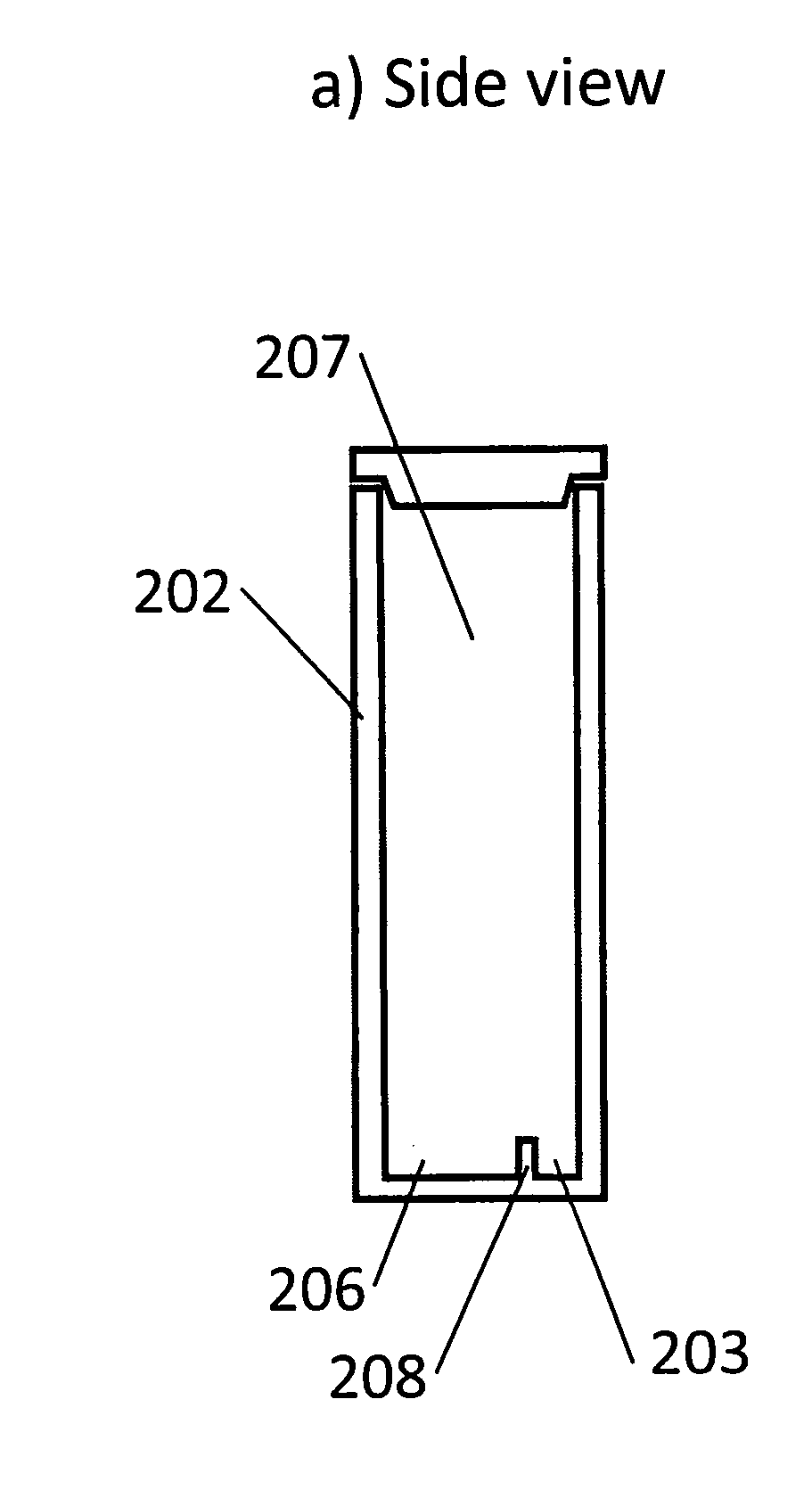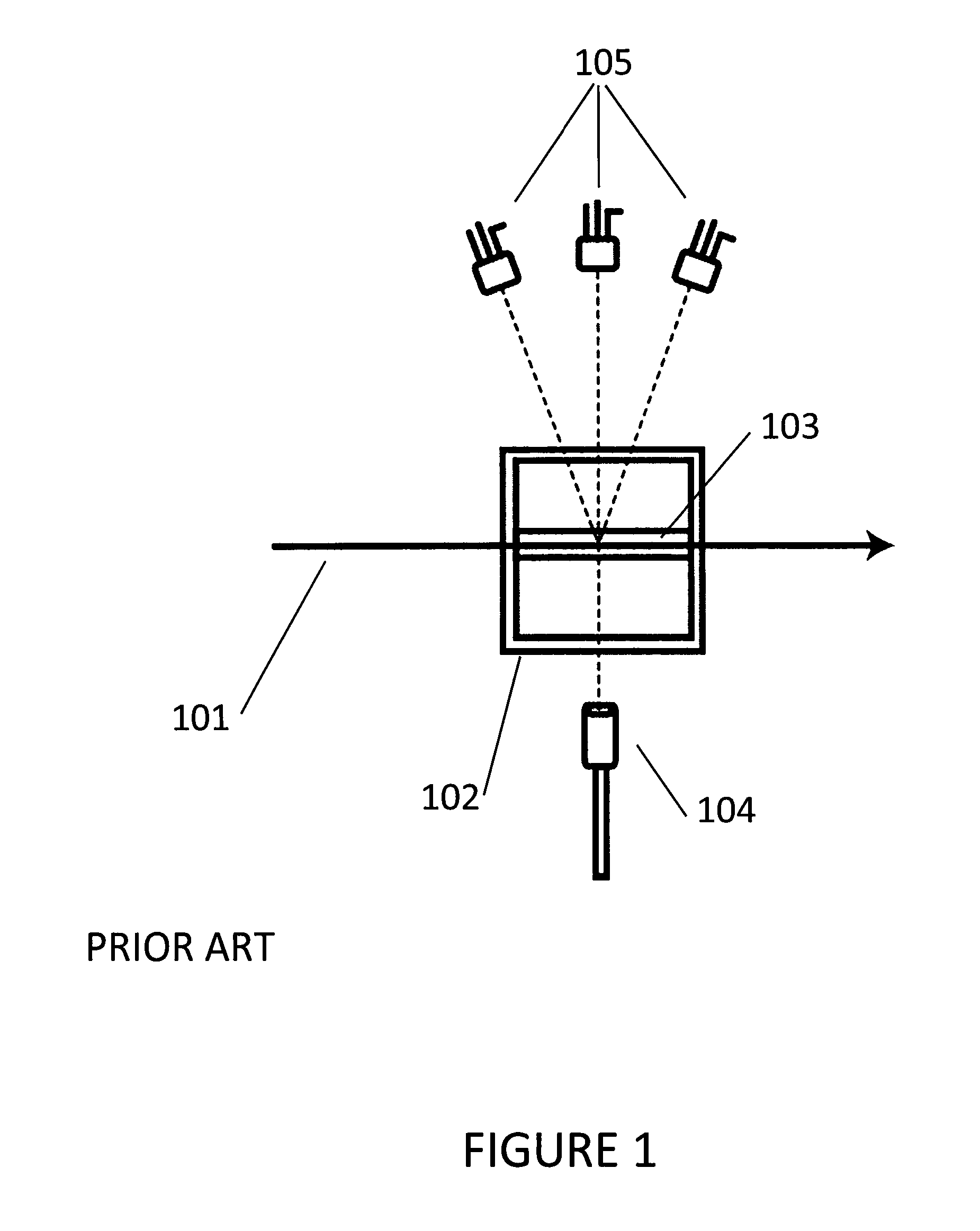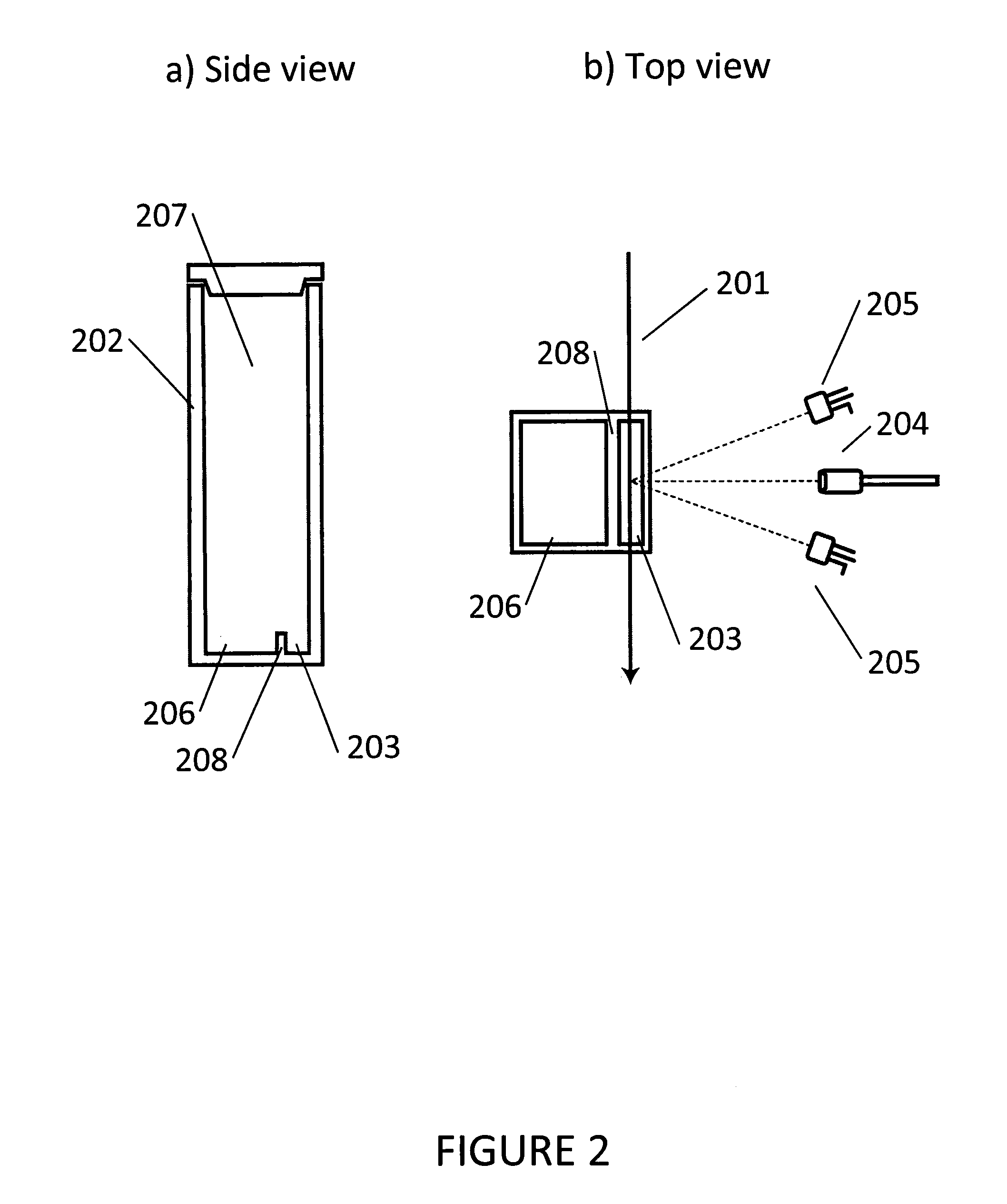Cuvette for light scattering measurements incorporating evaporation inhibition means
a technology of light scattering and cuvettes, applied in the direction of measuring devices, instruments, sampling, etc., can solve the problems of large change in the height of the fluid level, deleterious effects on the sample itself, and significant amount of sample still required to deliver
- Summary
- Abstract
- Description
- Claims
- Application Information
AI Technical Summary
Benefits of technology
Problems solved by technology
Method used
Image
Examples
Embodiment Construction
[0015]Cuvettes can be suitable sample vessels for the measurement of both Dynamic Light Scattering (DLS) and Static Light Scattering (SLS) at a single or multiple angles (MALS). A cutaway top view of a cuvette arranged for such light scattering measurements is shown in FIG. 1. A light beam 101, generally produced by a laser, is directed into the cuvette body 102, through an optically transparent surface, thereby passing through the sample contained within the sample measurement chamber 103. For the case of DLS measurements, a light scattering detector 104, generally an avalanche photodiode (APD) coupled to a light fiber, is used to collect scattered light. SLS measurements may be made at any number of angles by using one or more appropriate photodetectors 105, such as a photodiode, often a silicon PIN photodiode. These SLS and DLS detectors may exist on the same side or on opposite sides of the cuvette from each other or in other configurations. The detectors are generally arranged ...
PUM
 Login to View More
Login to View More Abstract
Description
Claims
Application Information
 Login to View More
Login to View More - R&D
- Intellectual Property
- Life Sciences
- Materials
- Tech Scout
- Unparalleled Data Quality
- Higher Quality Content
- 60% Fewer Hallucinations
Browse by: Latest US Patents, China's latest patents, Technical Efficacy Thesaurus, Application Domain, Technology Topic, Popular Technical Reports.
© 2025 PatSnap. All rights reserved.Legal|Privacy policy|Modern Slavery Act Transparency Statement|Sitemap|About US| Contact US: help@patsnap.com



